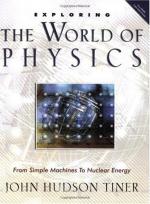|
This section contains 1,141 words (approx. 4 pages at 300 words per page) |

|
Nuclear energy, sometimes referred to as atomic energy, originates in the atomic nucleus, which is the extremely dense core at the heart of an atom. A large amount of energy can be released by nuclei in two different ways: fission, in which a very large nucleus is induced to break apart into two smaller ones, and fusion, in which two very small nuclei combine.
 Nuclear Power Plant reactor building and cooling tower (left). (Field Mark Publications)
Nuclear Power Plant reactor building and cooling tower (left). (Field Mark Publications)
A great deal of energy is released when a large nucleus undergoes fission, but for most nuclei the fission process is not easy to initiate. There are very few nuclei—uranium-235 and plutonium-239, in particular—that are relatively easy to fission. At present, commercial nuclear reactors use fission of uranium-235 as the energy source. A uranium-235 nucleus can be induced to undergo fission through...
|
This section contains 1,141 words (approx. 4 pages at 300 words per page) |

|


